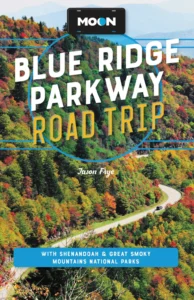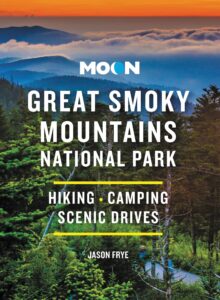Maggie Valley to Cherokee
Maggie Valley
The Blue Ridge Parkway swings south from Asheville through Transylvania County on the approach to Great Smoky Mountains National Park, though you’ll save an hour or more by following the I-40 freeway to the junction with US-19, which links up with the south end of the parkway. This stretch of US-19, winding through the Maggie Valley over the foothills of the Great Smokies, is a pretty drive, and absolutely packed with roadside Americana—miniature golf courses, trout farms, souvenir shops, lookout towers alongside pancake houses, barbecue shacks—you name it, it’s here.
Before its slow demise and final closure in 2016, the Ghost Town in the Sky was much more than an old Appalachian ghost town: an amusement park with roller coasters, bumper cars, and all the usual suspects, it was built high on the side of the Great Smoky Mountains in the 1960s. For half a century it managed to stay alive as an odd combo of religious-themed Wild West amusement park, with zip-line adventure parks and quotes from scripture. Fingers crossed, it will find a way to reopen.
Cherokee
West of Maggie Valley, the Blue Ridge Parkway and US-19 join up 52 miles west of Asheville at touristy Cherokee (pop. 2,138), commercial center of the 57,000-acre Eastern Cherokee Indian Reservation, which was established here by a small band of Cherokee people in 1866, long after the rest of this once-mighty nation had been forcibly exiled to Oklahoma on the Trail of Tears. Cherokee is a last gasp of commercialism at the edge of the national park, a traffic-clogged gauntlet of places where you can “See Live Bears,” “Eat Boiled Peanuts,” or ride the “Rudicoaster” at the pricey but kid-friendly Santa’s Land Fun Park and Zoo (828/497-9191, summer only, $23 adults). The biggest draw hereabouts is the ever-expanding Harrah’s Cherokee Casino Resort (828/497-7777, $99 and up).
The upscale casino, the region’s biggest draw, looms over a fading roadside lined by tacky old-time souvenir stands. But amid the tourist-taunting sprawl is at least one worthwhile stop: the Museum of the Cherokee Indian (daily, $11 adults), which traces the history of the Cherokee people from preconquest achievements—the Cherokee used a natural version of aspirin centuries before western chemists “discovered” it, for example—to their forced removal in the 1830s. There’s also a living history village and a big outdoor pageant.
Related Travel Guides
North Carolina Travel Map

















